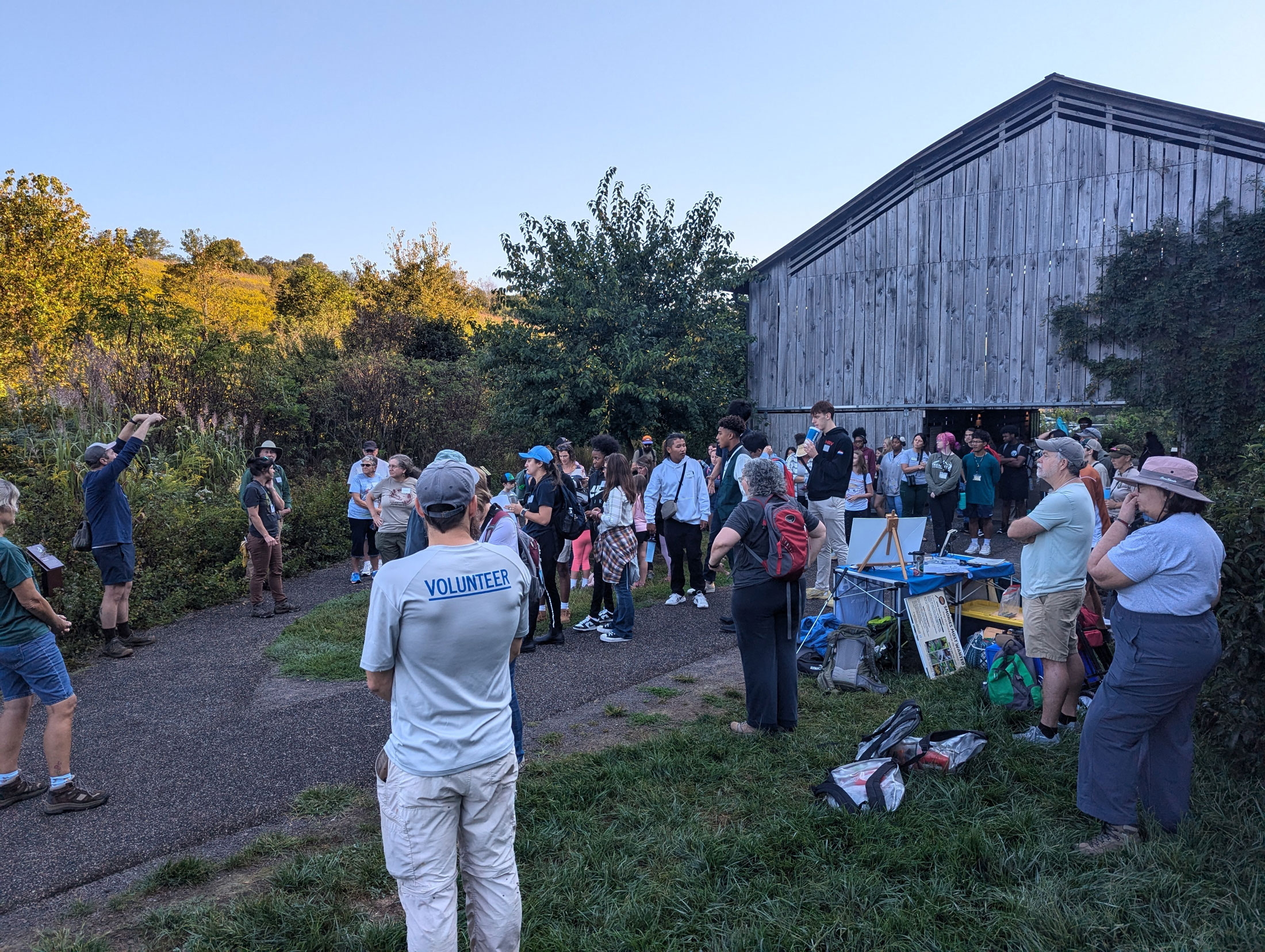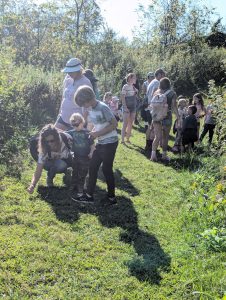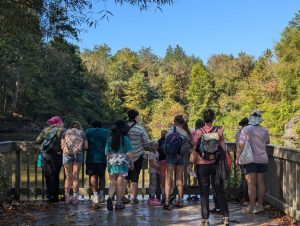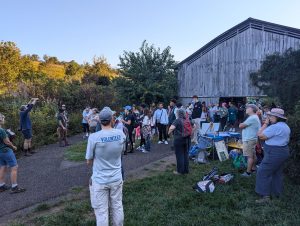
Recently, I saw a post on social media that read: “Are there science camps for adults? I just want to help someone dig up dinosaurs or count mushrooms or weigh turtles.”

That’s not the stuff of daydreams—it’s called community science! Here in the Smokies, we have many such opportunities for everyday people to assist with gathering biological data, which run the gamut from monarch butterfly tagging to bird banding to monitoring a plot of trees for seasonal changes. But my favorite among these is probably the bioblitz.
What is a bioblitz? It’s an event where biologists, naturalists, and volunteers gather and make a concerted effort to survey and record every organism they can find in a given area. And thanks to an app called iNaturalist, it’s absurdly easy to get in on the action. No logbooks, clipboards, or even prerequisite scientific knowledge are required. If you’ve got a smartphone and an active sense of curiosity, you’re ready to go!
Over 70 people joined me on a cool September morning for a bioblitz at Seven Islands State Birding Park, a 416-acre preserve just outside Knoxville on the banks of the French Broad River. True to its name, it’s a refuge for birds, but the vibrant fields of goldenrod, frostweed, and partridge pea promised us much more if only we were willing to take a closer look.
Discover Life in America, the nonprofit organization hosting the bioblitz, gave us our assignment: to spend the next three hours wandering Seven Islands taking photos (or audio recordings) of whatever organisms we could find. Afterwards, we would upload our observations to iNaturalist, which would automatically tag them with a time and location. The app has a built-in AI identification feature, but for the observations to be considered “research grade,” an expert must go in and verify the ID.
Given the size of our ensemble, we split into groups, with some of us wandering up onto the sunny grasslands to find insects, and others heading down into shadier wetlands to look for reptiles and amphibians. Some went in search of rare plants. I opted to spend the first hour or so meandering on my own, both of the mind that less commotion might yield me more sightings, and frankly because I was still waking up and not yet ready to commune with other humans. I was rewarded with discoveries of bumblebees, flies, moths and butterflies, dragonflies, and a Chinese praying mantis (an invasive species, but bioblitzes are good for discovering what alien invaders might be around, too. And boy, do these mantises look like aliens!)

After some time on my own, I went in pursuit of one of the groups. About 20 or so folks, including families and part of a high school group, were scouring the tall wildflowers for insects. The day was warming up, and Dr. Will Kuhn, DLiA’s director of science and research, was pointing out butterflies and spiders, prompting an explosion of questions from younger participants along the way. That was maybe the coolest part of the experience—just seeing kids so excited to take a picture of a cool bug, never once minding that most people see a wasp and run for the hills. Some were actively overcoming their fears in that very moment.
DLiA is a partner of Great Smoky Mountains National Park, and best known for coordinating the Smokies All Taxa Biodiversity Inventory, an effort to catalog every species in the National Park. They’ve been hosting bioblitzes in the southern Appalachians for the past several years, and while some are within park boundaries, many, like today’s, help contribute to a greater understanding of our region as a whole.
From DLiA’s website: “The idea behind an All Taxa Biodiversity Inventory (ATBI) is simple. If we want to be good stewards of our environment and keep the world around us healthy and vibrant, we need to understand the web of biodiversity. The information we need—how many species live in an environment, what jobs these species do and how they interact with each other—is largely unknown. An ATBI is more than just a checklist of species names. . . . it is a way to discover new species in need of protection, identify new threats in time to act and understand how to protect a complex and valuable ecosystem like the Smoky Mountains.”

By all measures, the Smokies ATBI has gotten off to an inspiring start. When the initiative launched in 1998, 9,756 species were known to live in GSMNP. Twenty-six years later, that number has over doubled to 22,063. Incredibly, this is only around 25-35 percent of the 60,000-80,000 total species biologists estimate to live in the park.
If you assumed that most of these discoveries were made by dedicated research efforts and specialists, you’d be correct. But the growing accessibility of community science is starting to make inroads. To date, iNaturalist users have added 245 species to the known count in GSMNP; that’s now over 1 percent of the species known to the Smokies.
Dr. Kuhn advised us at the beginning of our excursion that Seven Islands is a very well-loved and documented park, with 1,381 species already on record. In spite of that, I admit that I was relishing the idea of perhaps finding a new addition to the list. After all of our 346 observations were reviewed, we walked away with two new records: the aster bee fly (Sparnopolius confucius) and viceroy butterfly (Limenitis archippus).
The joy of a bioblitz is knowing that there’s always more to find. I wished I could have been in all places at once, with the group that found a pair of mating box turtles, or with the group that found a huge imperial moth caterpillar, as long as a person’s thumb. I guess I’ll just have to go to more of them! If you’re in the Smokies, I encourage you to check out DLiA’s future events, and if you’re not, to see what your local nature center has on offer. There’s few more rewarding ways to spend a day out in nature.
Subscribe to get the latest posts sent to your email.
The Great Smokies Welcome Center is located on U.S. 321 in Townsend, TN, 2 miles from the west entrance to Great Smoky Mountains National Park. Visitors can get information about things to see and do in and around the national park and shop from a wide selection of books, gifts, and other Smokies merchandise. Daily, weekly, and annual parking tags for the national park are also available.